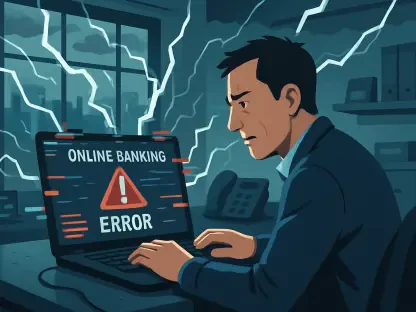A federal agency designed to be insulated from budget politics now faces a funding reinterpretation that could switch off its power without a single vote, exposing how a technical reading of one phrase—“combined earnings”—might ripple through the financial system and consumer protection in plain sight. The twist is that the lever is not appropriations at all, but the Federal Reserve’s income statement, with a new legal view arguing that only net profit counts toward the CFPB’s lifeline.
The stakes run beyond one agency’s budget line. The outcome will shape consumer protection capacity, the Fed–CFPB relationship, and the limits of executive-branch power to revise statutory meaning through legal memos rather than legislation. In short, the fight is testing how far administrative reinterpretation can move markets, alter enforcement, and tilt the balance of federal oversight.
This analysis maps the trend in five parts: the legal-financial shift redefining the funding stream, concrete changes already remaking supervision and enforcement, voices that validate or challenge the turn, scenario paths and market effects, and a closing synthesis with practical next steps.
How the Funding Fight Became a Systemic Trend
Evidence and Momentum: Funding Redefinition and Operational Contraction
The Office of Legal Counsel issued a memo on November 7 that re-anchors “combined earnings” to a net-profit concept, not gross earnings, importing corporate-style accounting into a public-finance context. Because the Federal Reserve’s interest expenses have outpaced interest income since rate hikes began driving balance-sheet costs, that reading implies no distributable profit—and thus no automatic CFPB funding stream.
The union representing CFPB staff points to an existing injunction and asks the court to block any attempt to let funds lapse as a workaround. Leadership has projected that current resources would be exhausted in early 2026, while litigation management has shifted toward the Justice Department and public remarks have sketched a glidepath toward closure, reinforcing a view that the legal turn and operational posture are moving in tandem.
Real-World Applications: Court Filings, Agency Choices, and Market Reactions
The National Treasury Employees Union filed to ensure the injunction binds regardless of funding requests, citing Chair Jerome Powell’s testimony that the Fed remains obligated to fund the bureau even during net-loss periods. Past practice at the Fed and CFPB followed a gross-earnings approach, which the union argues reflected statutory design rather than convenience.
Operationally, the bureau has rolled out a “humility pledge” that narrows exam scopes, avoids duplication with state regulators, and prioritizes self-remediation over formal enforcement. Communications have adopted sharper political color, and reports indicate enforcement furloughs and potential exam pauses, signaling that leadership is reconfiguring the apparatus in expectation of tighter resources.
What Experts and Stakeholders Are Saying
Legal and Policy Voices
Policymaker signals, including prior statements by the Fed chair, have favored the gross-earnings reading, placing continuity of funding above the Fed’s net position. Legal scholars frame the OLC move as a separation-of-powers stress test: can an executive interpretation effectively sunset an agency that Congress designed to be independent of appropriations?
The OLC position leans on the term “earnings” as surplus, aligning it with profit in business accounting. Critics counter that public-finance constructs, and the statute’s purpose, argue for a broader revenue notion that avoids tying consumer protection to the interest-rate cycle.
Industry and Consumer Advocates
Large financial institutions, eyeing fewer burdensome data calls and narrower exams, welcome more predictability and faster resolution channels. Yet they also warn about fragmented oversight as state regulators fill gaps unevenly, complicating multi-state compliance for national firms.
Consumer advocates worry that enforcement deterrence could wane as resources and posture shift toward collaboration over penalties. The prospect of a “rate-contingent” protection regime—stronger when the Fed earns a profit and weaker when it does not—raises alarms about fair treatment during tightening cycles.
Workforce, Union, and Former Officials
Union leaders call the profit-based reinterpretation unprecedented and argue that leadership signaling shows intent to wind down operations regardless of statutory design. Their filings seek to bind agency action to the injunction even if management declines to seek funds.
Former officials criticize the “humility” framing as mischaracterizing examiner conduct and projecting unnecessary contrition to large banks. Morale concerns have mounted amid reports of furloughs and suspended exams, raising retention risks and threatening continuity of specialized expertise.
Where This Is Headed: Scenarios, Risks, and Cross-Industry Effects
Funding Pathways and Legal Outcomes
If courts affirm the gross-earnings reading, funding would resume through the Fed’s earnings stream irrespective of net losses, reinforcing CFPB continuity and constraining leadership workarounds. That outcome would stabilize supervision and tamp down legal uncertainty.
If courts accept the profit-based reading but enjoin shutdown tactics, the bureau would face a volatile, stop–start budget, relying on reserves, interagency agreements, or temporary congressional fixes. Absent injunctive relief, early 2026 becomes a hard horizon, with severe downsizing and patchwork coverage by states and the DOJ.
Supervisory and Enforcement Trajectory
In the near term, the “humility pledge” shapes a collaboration-first model with shorter, more targeted exams and fewer data requests, with selective emphasis on service members and veterans. Escalation channels to supervisory leadership and the chief legal officer create pressure valves to course-correct exam conduct.
Over the medium term, persistent uncertainty would push greater reliance on state partnerships, supervisory guidance, and industry self-reporting. Long-run equilibrium, absent clarity and staffing recovery, would tilt toward supervision over enforcement, reshaping incentives for both compliant firms and potential bad actors.
Macro, Market, and Consumer Implications
A profit-based reading indirectly ties consumer protection to monetary policy, allowing high-rate environments to compress enforcement capacity. That linkage alters incentives across product pricing, fee structures, and dispute resolution when oversight tightens or loosens with the rate cycle.
Compliance cost relief could favor incumbents that can standardize quickly, while oversight gaps may advantage less scrupulous competitors. Consumers face uneven protection across states, with a higher risk of harmful practices if federal deterrence ebbs during funding droughts.
Risk Matrix and Leading Indicators
Watch legal rulings on the meaning of “combined earnings,” the scope and durability of injunctions, and the cadence of appeals. Each milestone resets the probability of shutdown, standby operations, or full restoration.
Operationally, track hiring freezes and furloughs, exam volume and length, and the migration of cases to the DOJ. In markets, shifts in complaint patterns, state-led settlements, and changes in product terms or fees will reveal whether deterrence is weakening or holding.
Bottom Line And Next Steps
Key Takeaways
The OLC’s profit-based reading breaks with long-held interpretations that treated the Fed’s earnings stream as the source for CFPB funding regardless of net losses. Leadership statements and operational pivots, including litigation transfers and the “humility pledge,” indicate preparation for a smaller footprint if courts do not restore continuity.
Supervision is narrowing by design, with collaboration favored over enforcement as resources tighten. Workforce anxiety and reported furlough plans underscore that capacity constraints were already reshaping the bureau’s posture even before any hard cutoff.
What To Watch Next
Court action on the union’s injunction request will determine whether leadership can allow a funding lapse to bypass judicial limits. The timeline to early 2026 becomes the practical clock, with budget burn rate, interim funding requests or refusals, and the durability of exam operations serving as near-term signals.
Enforcement staffing levels, exam cadence, and interagency coordination with states and the DOJ will indicate whether a decentralized model can sustain consumer outcomes. Communications tone and policy guidance will further show whether the new posture is tactical or structural.
Strategic Guidance For Stakeholders
Financial institutions should document self-reporting and remediation, verify exam alignment with the pledge, and prepare for state-by-state variation in oversight. Consumer advocates should monitor complaint spikes and regional disparities and press for interim safeguards that prevent bad actors from exploiting gaps.
Policymakers should consider clarifying statute to decouple consumer protection funding from Fed net profit cycles and increase transparency around CFPB funding requests and use. Absent clarity, markets should expect supervision to remain narrower, with enforcement playing a smaller role than before.
The trend pointed to a coordinated legal and operational squeeze that reshaped how the CFPB functioned, pushed oversight responsibilities toward states and partnerships, and made consumer protection more sensitive to monetary policy conditions; the practical path forward hinged on court definitions and near-term budget signals, which suggested concrete steps for institutions, advocates, and policymakers to stabilize outcomes while the legal questions were resolved.









